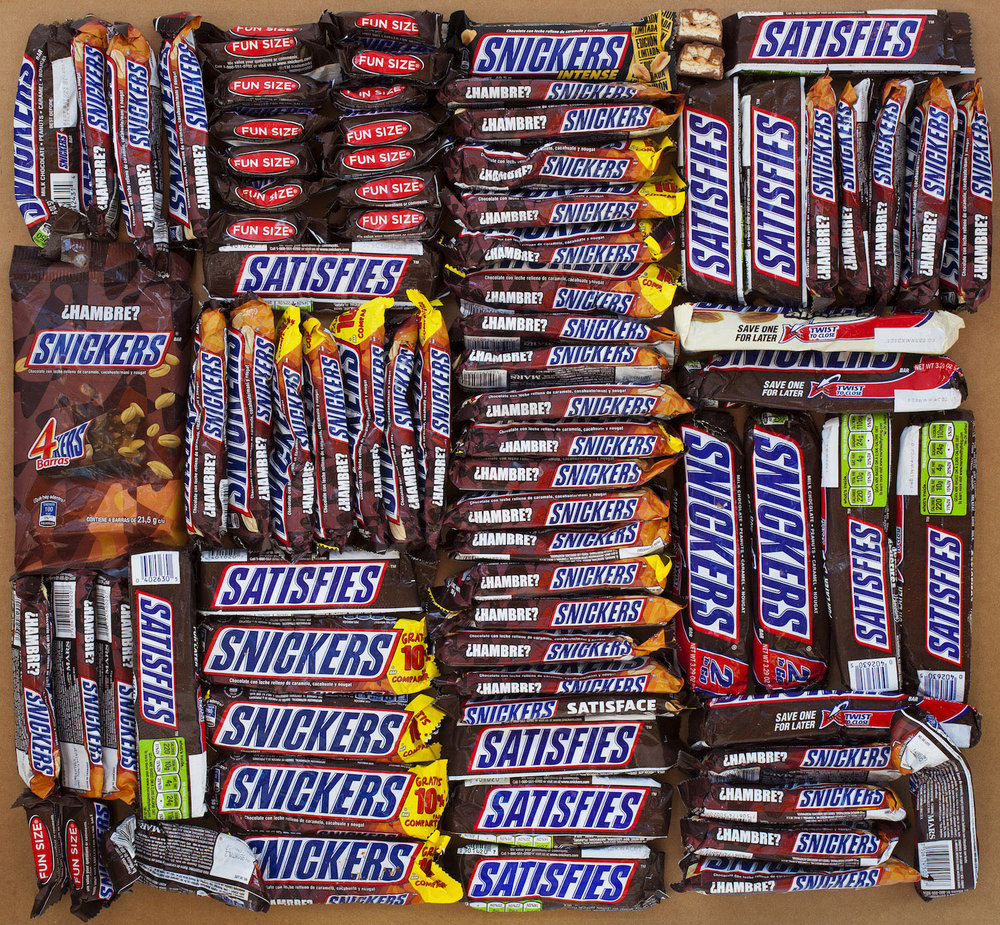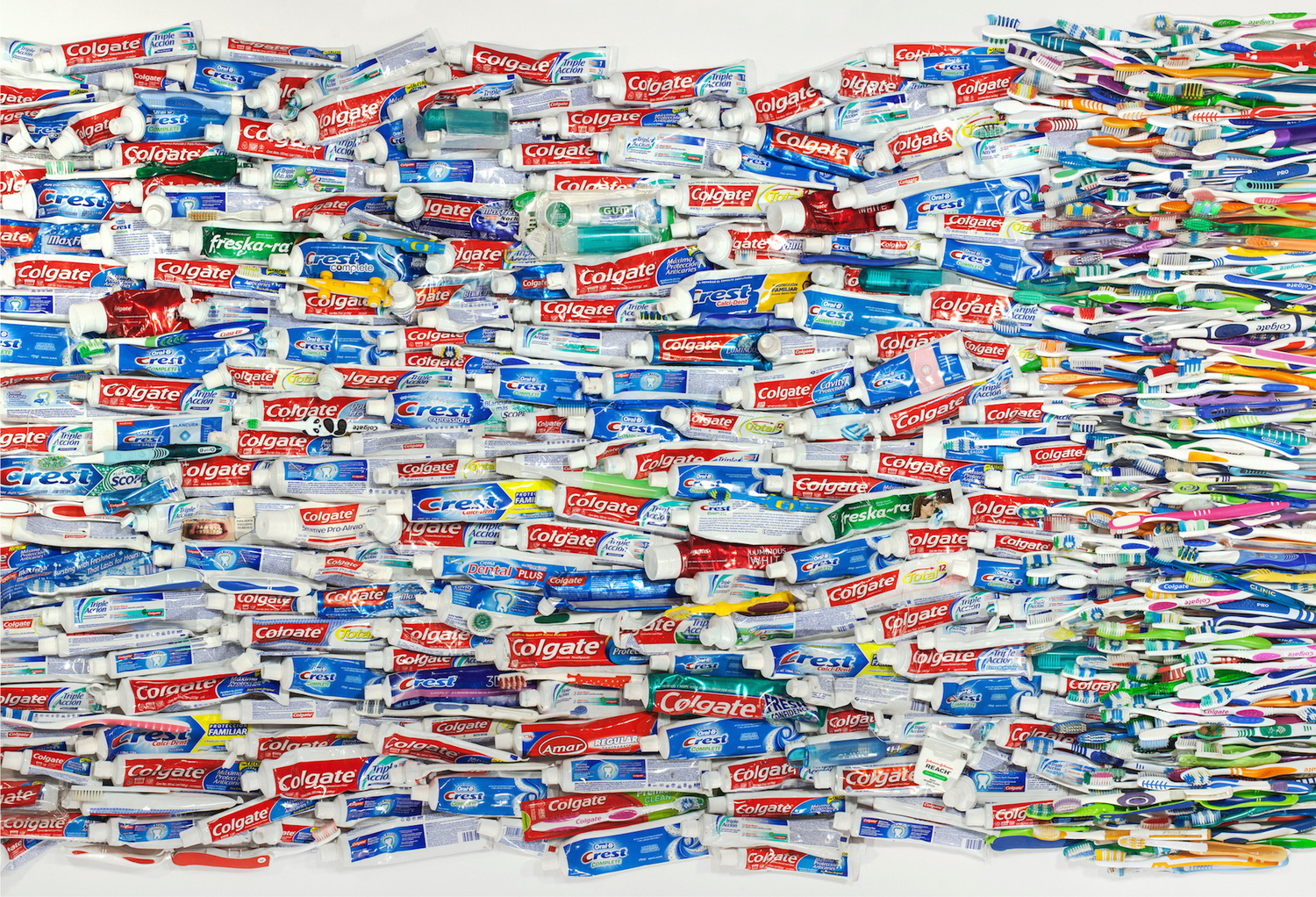In thinking about the exhibition El Sueño Americano | The American Dream and Tom Kiefer‘s presentation of photographs of objects border patrol agents seized from migrants at the U.S. Mexico border in Arizona, it is difficult not to wonder about the formal presentation of the objects and if that undermines the impact of the project. The objects — keepsakes, water bottles, letters, medications, toys and toiletries— are both generic and deeply personal items. That the migrants made their journey with these things indicates they had use-value and/or personal significance. The fact that they were confiscated speaks directly to the difficulties migrants and asylum seekers have as the seek entry into the United States. While some items are lost when detainees are transferred between locations and agencies, other items deemed “non-essential” are confiscated.
Kiefer‘s access to these objects stems from his job working as a janitor at a Customs and Border Protection Station in Ajo, Arizona from 2003 to 2014. He states, “In 2007 I asked a supervisor if I could begin collecting the food that was being thrown away and deliver it to a food bank … And I found deeply personal items like rosaries and Bibles, family photographs. That was just not right. I was not going to allow someone’s rosary or Bible to remain in the trash. I discreetly began taking them.” His pillaging of the station’s trash bins led to a collection of more than 100,000 items. Six years after his collecting began, Kiefer started his photography project. He assembled and arranged like items from his archive, creating visually stunning images that showcased the differences and similarities in these objects. For example, USA!,USA!,USA!, 2019 is an image of red, white and blue toothbrushes arranged on a deep blue background. The horizontal expanse of the 50 toothbrushes gives pause, as at first the large image seems like an advertisement, yet upon closer examination, it becomes clear that these items of different shapes and sizes were used. They are also harmless and carried for personal hygiene. Why would the agents take them away?

USA!,USA!,USA! (2019) by Tom Kiefer. Courtesy of the Skirball Cultural Center
What is the relationship between the object and the person? While Kiefer‘s aim is to shed light on the plight of the injustices and indignities of the migrants and asylum seekers, the photographs aestheticize the issues. The photographs are all artfully arranged. Some present multiple objects like the toothbrushes or combs and brushes, soap, sunglasses, bottles, shoelaces, and belts as well as packages of medicine and condoms. Hundreds of shoelaces are casually piled to form a large circular mass in one image while in another, Kiefer assembled numerous belts into a circular labyrinth. One photograph of pink combs and brushes is shot against a light pink background while in another he arranges black combs and brushes on a black background. The exhibition also includes two large grids of individually framed photographs, each presenting an object or small combination of objects against a colored background. The beauty of the arrangement is an immediate draw that leads to further contemplation about the story. Who did these things belong to? What happened to them?

“The Snickers brand of candy bar is generally the most popular of all carried by migrants and U.S. Border Patrol agents. All food is considered contraband and discarded during intake.” Courtesy of Tom Kiefer.
Where are they now? Were they let into the United States or sent back to the places they fled? Questions without answers and questions that the photographs cannot address.
The presentation of so many things, be it non-essential items or snacks like Snickers bars, calls attention to the fact that the people crossing the border, for whatever reason, are human and should be respected and treated as such. Kiefer‘s photographs illustrate personal idiosyncrasies, yet the project is as much about Kiefer‘s story as it is about the migrants’ plight. El Sueño Americano | The American Dream, refers to loss— the potential loss of a dream as told through a collection of lost objects.
El Sueño Americano | The American Dream: Photographs by Tom Kiefer
Skirball Cultural Center
October 17, 2019–March 8, 2020


